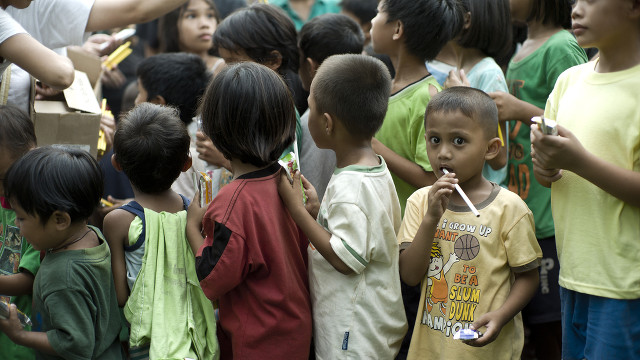SUMMARY
This is AI generated summarization, which may have errors. For context, always refer to the full article.

MANILA, Philippines – “We work everyday so that, one day, we won’t have a job,” says Arjun Jain, head of the United Nations High Commissioner for Refugees (UNHCR) office in Mindanao.
He speaks half in jest, half in earnest before an audience of about 100 gathered at the Shangri-La Plaza, Ortigas, on June 20 to celebrate World Refugee Day.
Jain, whose work gets him involved in the lives of Mindanao’s internally-displaced persons (IDPs), is eager to see his job become obsolete.
“As long as we are needed, we have not yet finished our job.”
It is perhaps a little known fact that the Philippines has played a significant role in the welfare of refugees around the world.
In the 1920s, members of the anti-communist “White Movement” in Russia found refuge in the Philippines, as did European Jews fleeing from the threat of Nazism and exiles from the Spanish Civil War. From the 1970s to the early 90s, more than 500,000 Indochinese refugees have found sanctuary in the country.
Here are more facts about refugees all over the world and in the Philippines:
- There are more than 45 million refugees and internally-displaced persons in the world, the highest number in 20 years.
- More than half of these come from 5 countries: Afghanistan, Somalia, Iraq, Syria and Sudan.
- Major new displacements are happening in Mali, the Congo and Sudan.
- Nearly half the world’s refugees are below 18.
- Developing countries host 81% of the world’s refugees, up from 70% from the last decade.
- In the Philippines, 2.5 million people have been internally displaced since January 2012 due to armed conflict, violent clan feuds and natural disasters.
Displacement in Mindanao
But how can people far away from conflict help such refugees as these internally-displaced persons? How can Filipinos from different parts of the country help victims of forced displacement in Mindanao?
Jain says understanding is key. “There are misconceptions about Mindanao that we have to get rid of. Such as the misconception that the main cause of forced displacement is the armed conflict between the MILF and AFP, but that’s far from the truth,” he says.
The Moro Islamic Liberation Front signed a peace agreement with the Philippine government in October last year, but complications remain in its execution.
Based on UNHCR data, natural disasters are the main cause of displacement, especially amid the global concern for climate change as Mindanao now also bears the brunt of tropical storms.
The bitter rivalries among Mindanao’s ruling families have also caused the displacement of entire communities. Compounding this situation are the remnants of armed conflict: banditry, the secessionist movement and the communist insurgency.
The message UNHCR wants to get across is that it’s not just up to the government to stop displacements, but everyone. Humanitarian agencies can help prepare communities for disaster or build the right infrastructure to keep intact these communities.
Pockets of stability
Jain remains positive that all displaced persons in Mindanao will return to their homes and live in an environment of peace. The creation of “pockets of stability” in the region may help secure this aspiration as a reality.
“When people see that one area is stable, they want to aspire to be like that and it will have a trickle-down effect where more and more communities want more than what conflict and displacement can give them,” says Jain.
A remote barangay called Tina in the Autonomous Region in Muslim Mindanao is one “pocket of stability” being assisted by the UNHCR.The agency visited this community in 2010 and started a small sewing club, which inspired the villagers to band together and find solutions to their problems.
“That rolled into something bigger and bigger. Other agencies came in to provide help. Today, 95% of [the villagers] have come back home,” Jain says. “It’s not absolutely safe and secure but it’s a place of hope and hope is the first step.” – Rappler.com
Children in Cagayan de Oro image from Shutterstock
Add a comment
How does this make you feel?


There are no comments yet. Add your comment to start the conversation.